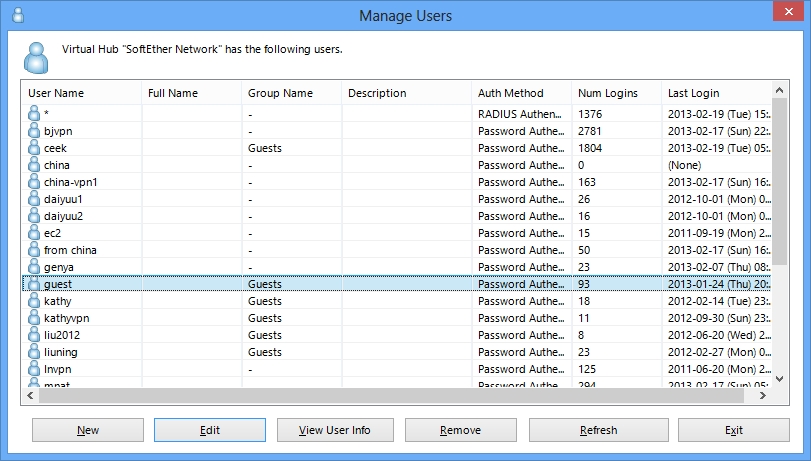Openvpn Clients For Mac Os X
Free OpenVPN Mac OS X 10.3/10.4 Version 2.3.2 Full Specs. Supports flexible client authentication methods based on certificates, smart cards, and/or 2-factor authentication, and allows user. Troubleshoot Point-to-Site VPN connections from Mac OS X VPN clients.; 2 minutes to read +4; In this article. This article helps you troubleshoot Point-to-Site connectivity issues from Mac OS X using the native VPN client and IKEv2. The VPN client in Mac for IKEv2 is very basic and does not allow for much customization.
Important


Openvpn Client Mac Os
Netgate is offering COVID-19 aid for pfSense software users, learn more.
The instructions below are tested on Mac OS 10.7.3 (Lion). Open System Preferences Network from Mac applications menu. Click the '+' button to create a new service, then select VPN as the interface type, and choose L2TP over IPsec from the pull-down menu. Server Address: E nter the hostname (e.g.com) or the active WAN IP (e.g. Hostname is encouraged instead of active WAN IP.

There are three client options for Mac OS X.:
The OpenVPN command line client. Most users prefer a graphical client, so thisoption will not be covered.
Tunnelblick, a free option available for download at the Tunnelblick Website.
The commercial Viscosity client. At the time of this writing, it costs $14USD for a single seat. If OpenVPN is used frequently, Viscosity is a muchnicer client and well worth the cost.
Both Tunnelblick and Viscosity are easily installed, with no configurationoptions during installation.
Configuring Viscosity¶

When using the Viscosity client, it can be configured manually or the OpenVPNClient Export package may be used to import the configuration. Viscosityprovides a GUI configuration tool that can be used to generate the underlyingOpenVPN client configuration. The CA and certificates can be imported manually,and all of the parameters can be set by hand. This section cover importing aViscosity bundle from the export package.
Openvpn For Mac Os
Download a copy of the Viscosity bundle for the client from the OpenVPNClient Export package
Locate the saved file, which will end in
.visc.zipindicating that it is acompressed archiveCopy this exported bundle to a folder on the Mac
Double click this file and it will expand to
Viscosity.viscDouble click
Viscosity.viscand Viscosity will open and import theconnection as shown in Figure Viscosity Import
Delete the
Viscosity.viscdirectory and the.ziparchiveViscosity will be running after import, and may be found in the menu bar
Click the lock icon added to the menu bar at the top of the screen
Click Preferences to check that the configuration was imported as shown inFigure Viscosity Preferences
Viscosity Preferences¶
Check the Connections area to see if the connection imported successfullyas shown in Figure Viscosity View Connections.
Close the Preferences screen
Click the lock in the menu bar
Click the name of the VPN connection to connect as shown in FigureViscosity Connect. After a few seconds, the lock in the menu barwill turn green to show it connected successfully.
Viscosity Connect¶
Click on it and then click Details as shown in FigureViscosity Menu to see connection information
On the first screen (Figure Viscosity Details), the connectionstatus, connected time, the IP assigned to the client, and the IP of the serverare all displayed. A bandwidth graph is displayed at the bottom of the screen,showing the throughput in and out of the OpenVPN interface.
Viscosity Details¶
Clicking the up/down arrow button in the middle of the details screen displaysadditional network traffic statistics. This shows the traffic sent within thetunnel (TUN/TAP In and Out), as well as the total TCP or UDP traffic sentincluding the overhead of the tunnel and encryption. For connections usingprimarily small packets the overhead is considerable with all VPN solutions. Thestats shown in Figure Viscosity Details: Traffic Statistics are from only afew pings traversing the connection. The traffic sent in bringing up theconnection is also counted here, so the initial overhead is higher than what itwill be after being connected for some time. Also, the typical VPN traffic willhave larger packet sizes than 64 byte pings, making the total overhead anddifference between these two numbers considerably less.
Clicking on the third icon in the middle of the Details screen shows theOpenVPN log file (Figure Viscosity Details: Logs). If there is any troubleconnecting, review the logs here to help determine the problem. See alsoTroubleshooting OpenVPN.
Viscosity Details: Logs¶
VPN Protocols
There are no limitations regarding the use of VPN protocols.
Shimo supports every major VPN protocol that is currently available: The widely used CiscoVPN, the very secure OpenVPN and all standard-compliant IPSec connections. It also handles Point-to-Point Tunneling (PPTP VPN) and Layer 2 Tunneling (L2TP) protocols. Even Cisco’s new Secure Socket Layer (SSL) protocol AnyConnect is supported by Shimo – the most flexible VPN client for Mac. Shimo also enables you to establish encrypted Secure Shell (SSH) connections including port forwarding for secure web browsing.
There is no other VPN client for Mac which supports this variety of available protocols. If you want to have the all-in-one solution for your secure connections, Shimo is technology of choice. This feature is not only helpful, if you have to handle different types of connections, but rather in cases where your system administrator upgrades or changes the used protocol. With Shimo you are always prepared and ready to go.

Mac Install Openvpn Client
Shimo does not support PPTP/L2TP on macOS Catalina due to Apple's enforced security requirements.
